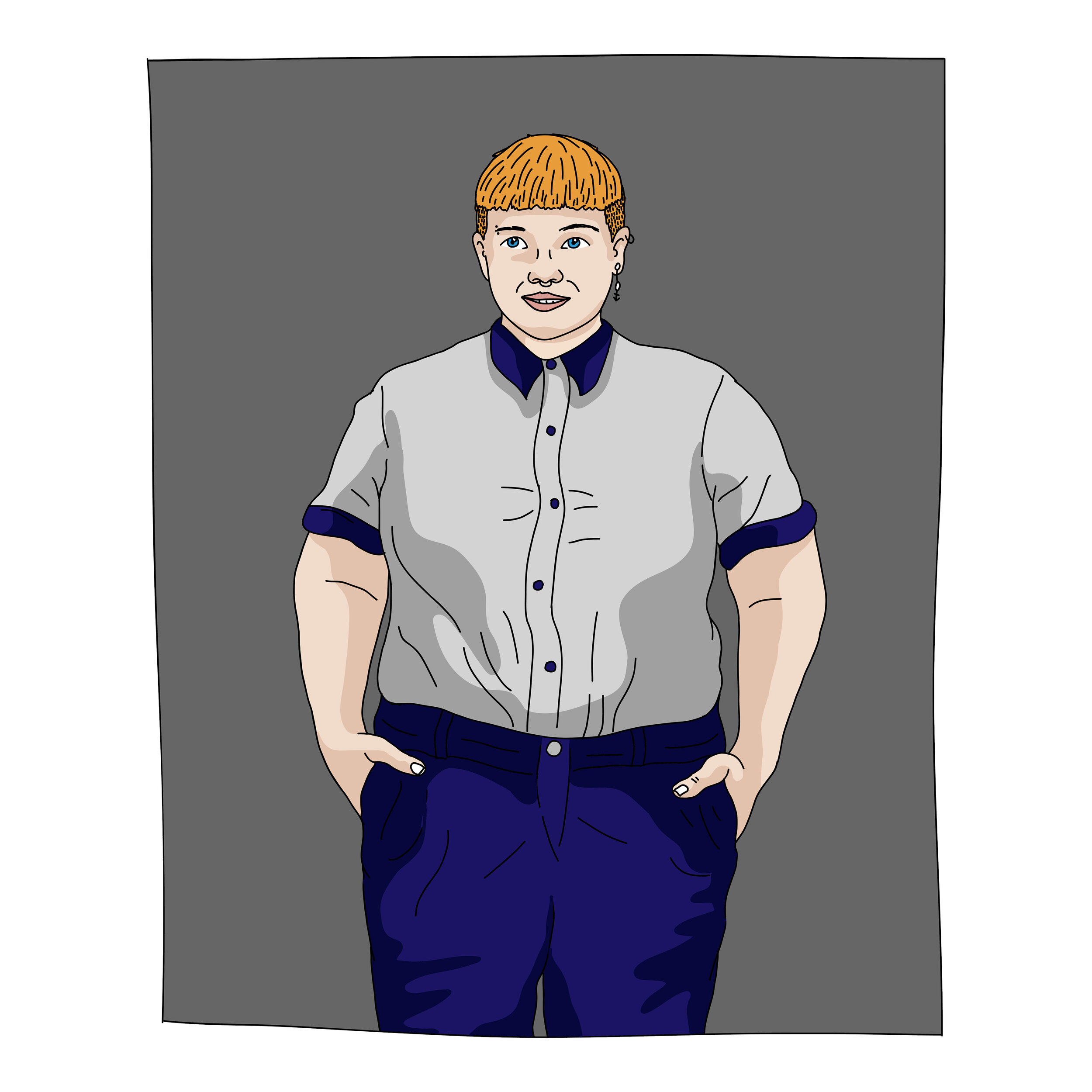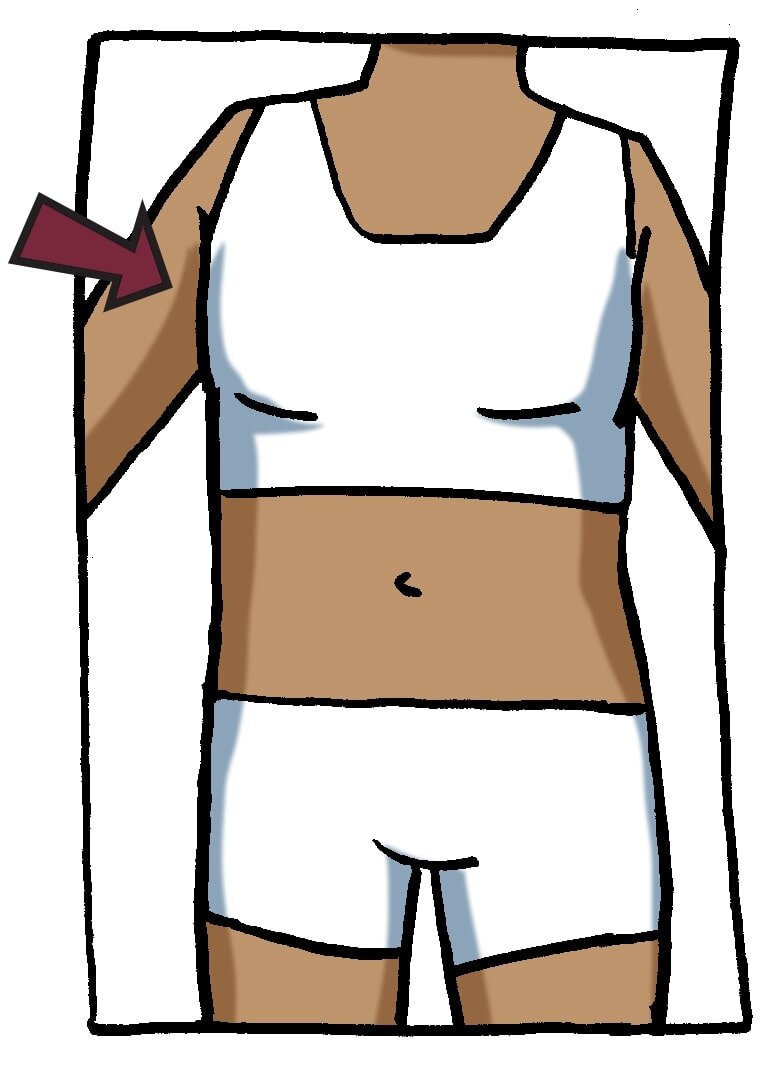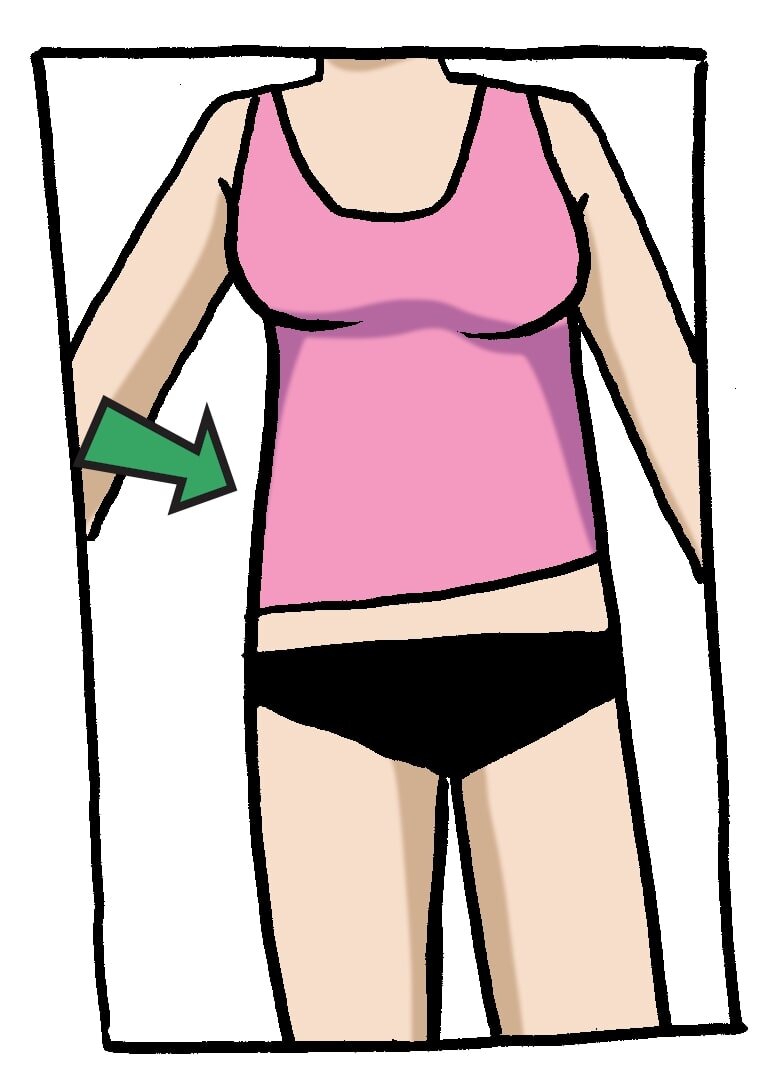Clothes
On this page:
Illustration by Samuel Luke Art
The clothing and underwear we have and wear are a daily way to make decisions about how we express who we are, how we seek to exist in the world, and how to be comfortable in our bodies, and identities.
When we see other people out in the world, one of the first things we notice about them is how they’re dressed. For a lot of people, clothes help flag their gender, whatever that may be. In a gendered society, specific clothes, cuts, and fabrics tend to hold specifically gendered attributes, each to either be conformed to, or distanced from.
It’s important to remember that clothes don’t have a gender, people do. You can wear whatever you want and be 100% your gender. If others get this wrong, it’s not because you are doing something wrong, or making it harder for them. You deserve to be affirmed in your gender no matter how others see you.
As far as affirmative changes you can make, unlike legal or medical affirmation, clothes can be a relatively simple one. They have the flexibility of being put on and taken off easily and as desired, and only in situations and places you feel comfortable. Very few gendered attributes can be literally tried on to see if you think they fit.
The cool thing about gender is that there are no rules!
Minus 18
Finding clothes
When it comes to your look, it can take a bit of time to find what feels most affirming, and that isn’t a failure by any means. Cis people have their entire lives to figure out what their style is, and what does and doesn’t feel good to wear. Take your time and be gentle.
Every item you try on is helping you find your look.
Illustrations by Grace Crowley
The following tips might help you find the look that works and feels great.
Before you start, take your bust/chest, hip and waist measurements.
Check how they correspond with sizes.
Keep in mind that sizes differ considerably between ‘men’s’ and ‘women’s’ styles in Australia.
Gendered clothing is typically based on different ratios of body parts, so make sure to buy items that fit all of your measurements, or at least the largest one.
While standard sizes indicate a general idea, a size 12 will vary not only between brands, but sometimes from item to item.
Online stores often include sizing measurements so you can double check if something is likely to fit, and what size you may be.
Be sure to find out the return policy so you know how to return what doesn’t fit or feel affirming.
If you’re shopping in person, take a trusted friend or family member. They can be a buffer between you and any nosy staff, help you feel safe around new shops, and may even be able to suggest fashion.
Op shops often have lots of different styles and sizes available to try on.
It’s ok to take a break and try another day, or take a few minutes to relax before heading to a different shop.
Shoes
Like many other items of clothing, shoes can be a way we express ourselves in public and at home. There are so many different kinds of shoes for every occasion, event, feeling, or situation.
Some trans people find it difficult to find affirming shoes in their size, just like some cis people struggle to find shoes that will fit them. Shoe manufacturers generally make shoes within a range that fits the most people, but not everyone, and so occasionally you may need to seek out speciality shoe makers for smaller or larger feet.
The below table gives an indication of the way sizes relate, especially the relation between ‘men’s’ and ‘women’s’ sizes. Exact measurements for each size will vary between brands - this table is a great starting point, but make sure to check your size against any item before purchasing.
| Range of "men's" sizes | Size (mm, approx) | Range of "women's" sizes |
||||||
|---|---|---|---|---|---|---|---|---|
| AUS | US | Europe | UK | Aus | US | Europe | UK | |
| 181-190 | 1 | 1 | 32 | 12 | ||||
| 191-200 | 2 | 2 | 33 | 13 | ||||
| 201-210 | 3 | 3 | 34 | 1 | ||||
| 211-220 | 4 | 4 | 35 | 2 | ||||
| 3 | 4 | 35.5 | 3 |
221-230 | 5 | 5 | 36 | 3 |
| 4 | 5 | 37 | 4 | 231-240 | 6 | 6 | 37 | 4 |
| 5 | 6 | 38 | 5 | 241-245 |
7 | 7 | 38 | 5 |
| 6 | 7 | 39 | 6 | 246-250 | 7.5 | 38 | 5 | |
| 7 | 8 | 41 | 7 | 250-259 | 8 | 8 | 39 | 6 |
| 8 | 9 | 42 | 8 | 260-269 | 9 | 9 | 40 | 7 |
| 9 | 10 | 43 | 9 | 270-274 | 10 | 10 | 41 | 8 |
| 10 |
11 | 44 | 10 | 275-276 | 10.5 | 41.5 | 8.5 | |
| 10.5 | 11.5 | 45 | 10.5 | 275-276 | 11 | 11 | 42 | 9 |
| 11 | 12 | 46 | 11 | 277-279 | ||||
| 12 | 13 | 47 | 12 | 286 | ||||
| 13 | 14 | 48 | 13 | 292 | ||||
Underwear
Underwear can be a bit of a mine field for trans and gender diverse people, as undies are both private, and also deeply gendered. That said, trying different types of underwear can be an incredibly affirming thing to do before we feel comfortable being more public in presentation (if that’s what is sought).
You don’t have to be out to anyone to experiment with underwear but this is only possible if you’ll be doing your own laundry, or have the ability to do laundry out of the house.
There are also lots of companies making non-gendered styles of underwear, which can be a good way of wearing something affirming but that still feels comfortable or isn’t seen by others as a particularly gendered thing.
If you’re packing, make sure you have snug underwear like briefs or boxer briefs, or underwear that is specifically designed for packing. This can help keep everything secure and in place; no one needs a packer rolling into the next toilet stall.
If you have a penis and wanting to wear feminine looking underwear, it’s possible to do without sacrificing comfort. Wearing styles with slightly more coverage at the front and along the gusset can help keep everything in place, and if you want to tuck, wearing slightly tighter styles can help reduce a visual bump.
You can also get underwear specifically to wear while menstruating, to avoid having to use other menstrual products, and which is available in a range of styles and cuts.
Remember, even though some items of clothing will be super affirming and others will be uncomfortable, clothing itself doesn’t have a gender, people do. For some people, packing, binding and tucking may be a necessary part of wearing clothes that feel affirming, and for others these will be uncomfortable, unnecessary, or actively contribute to feeling bad. How you exist in your body, and what clothes you put on it is up to you.
Bras
Bras support breast tissue, either what is newly growing or has been around for a while. Bras can also help contour an affirming upper body shape and there are a lot of different styles available, in a large range of sizes, including with and without an under-wire, made of all sorts of fabrics, and some even have pockets to put breast forms in.
A good bra should never feel like it’s squeezing or has too much pressure anywhere, and also shouldn’t feel like it’s too loose.
Measuring and trying to find the right fit can feel like a complex and confusing process, but it’s a matter of taking the right measurements and trying things on to see if they’re comfortable.
Take the following measurements:
The fullest part of your bust when sitting, standing , leaning and laying down
A loose and snug under bust
The website A Bra That Fits has a great calculator for helping take the right measurements. It can still take some experimentation and fiddling around to find something that fits.
It can be tempting to buy a bra that’s much bigger than you need, but people of all body sizes and shapes have breasts of all different sizes - having a smaller cup size isn’t an indication of anything other than the size of your breasts, the same as it is for other people.
Links
Trans Summer School: Gender Expression Gear - Scarleteen
Bra Size Calculator - A Bra That Fits
OMG I’m Trans [PDF] - Minus18









